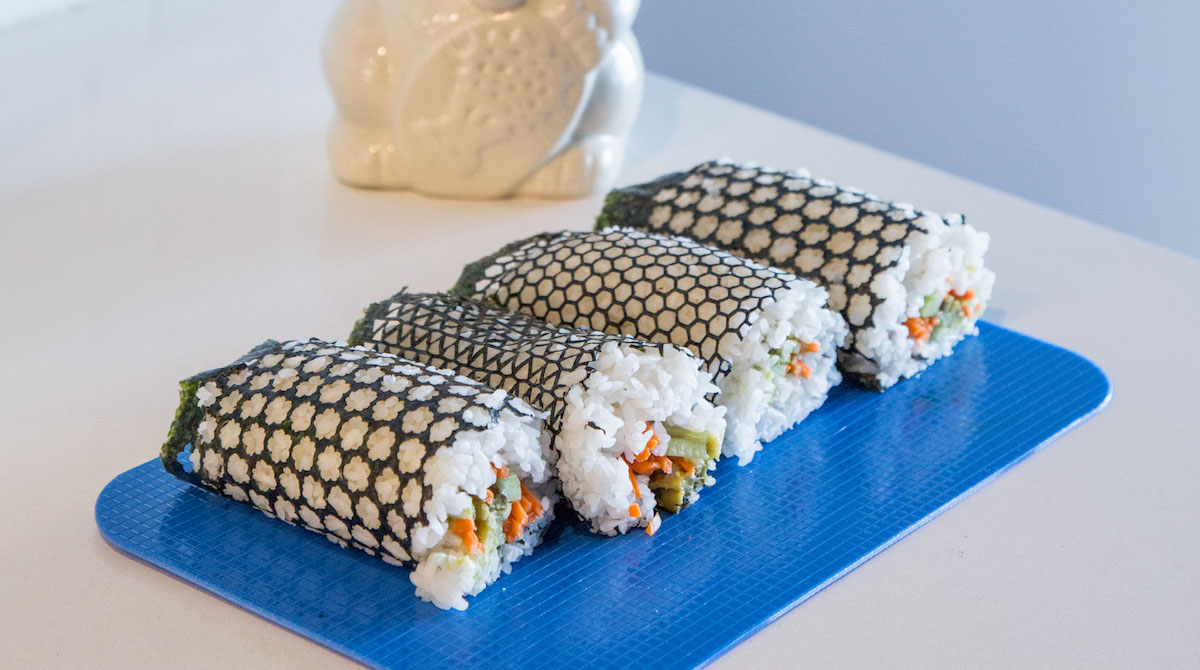

I first saw laser-cut sushi while reading Designboom and it really stuck in my mind. So beautiful!
So I figured out how to re-create the process. Since the laser cutter does all the work, I mostly just had to think about what design I’d like to generate in Adobe Illustrator. It did take a few tries to get the pattern centered properly, and to get the laser cutting right without burning the seaweed.












